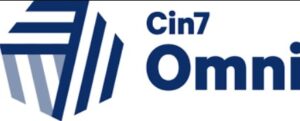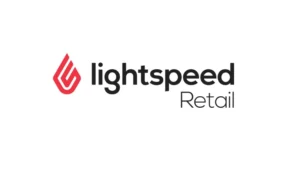Sometimes it seems like your favorite businesses have a crystal ball – they’re always there just when you need them. They find ways to introduce new products, offer you special offers on the products you want, and keep you coming back.
But what if you want to improve your ecommerce or retail business performance and nurture customer relationships without a crystal ball or magic wand?
That’s where Customer Relationship Management (CRM) software comes in.
CRM software helps you manage customer interactions, streamline sales and marketing processes, and enhance customer satisfaction and loyalty.
With so many CRM systems on the market, choosing the one that matches your specific business needs can feel overwhelming. So, in this article, we’ll show you how to choose CRM software that gives your business that magic touch.
What is CRM software?
CRM software is a customer-centric tool that enables businesses to manage and analyze customer interactions and data, streamline processes, and improve customer engagement and loyalty.
By centralizing customer information, businesses can better understand their customers’ needs, preferences, and behaviors and use this knowledge to provide personalized experiences and services.
One of the key features of CRM software is its ability to track customer interactions across multiple channels. This means you can see a complete history of customer interactions, including emails, phone calls, social media messages, in-store purchases, and website visits, all in one place.
This not only helps you to understand your customers better but also allows you to provide more efficient and personalized service.
The 6 key benefits of CRM software for retail businesses
If you’re wondering why you might need CRM software for your business, here are the six key benefits.
1. Better customer insights and segmentation
CRM tools allow you to analyze customer data and gain valuable insights into their behavior and preferences. Using this data, you can segment customers based on factors such as demographics, purchase history, and engagement levels and tailor your marketing and sales strategies accordingly.
2. Improved customer engagement and satisfaction
CRM software also enables businesses to respond quickly to customer inquiries, track customer issues, and provide timely and relevant information. By providing personalized experiences and efficient service, you can improve customer satisfaction and loyalty.
3. Increased sales and revenue
With the right CRM software, you’ll be able to identify cross-selling and upselling opportunities, track sales performance, and automate sales processes. By understanding your customers better and tailoring your sales and marketing strategies accordingly, you can increase sales and revenue. Studies have even shown that companies that use CRM systems have a 17% increase in lead conversions, enhanced marketing efficiency and ROI.
4. Marketing becomes much easier with CRM software.
You’ll be able to create targeted marketing campaigns, track campaign performance, and analyze customer behavior and preferences. By targeting the right customers with the right message, businesses can improve their marketing efficiency and ROI.
5. Streamlined customer support and service
By centralizing customer information and interactions, your company can provide more efficient and effective customer support and service. CRM software enables businesses to track customer issues, assign tasks to team members, and provide timely and relevant information to customers.
6. Greater collaboration and productivity
Team members can access customer information and collaborate on tasks, improving team productivity and collaboration. CRM software allows you to assign tasks, track progress, and communicate with team members in real time.
The 3 types of CRM systems
CRM systems can be categorized into three types based on their deployment mode:
- On-premise
- Cloud-based
- Hybrid
On-premise CRM software is installed and managed on the company’s servers and infrastructure, while cloud-based CRM software is hosted on the vendor’s servers and accessed via the internet.
Hybrid CRM software combines both on-premise and cloud-based models, allowing businesses to customize and control their CRM environment as needed. Choosing the right model depends on your business size, budget, security, and accessibility requirements.
At StackPlan, we focus primarily on cloud-based solutions to improve the integration between multiple software solutions. This gives our clients much more flexibility and allows for easier growth in the future.
How to choose the best CRM software
By choosing the right CRM software and leveraging its features effectively, businesses can improve customer engagement, increase sales and revenue, and streamline their processes for greater efficiency and productivity. Here’s how to figure out which CRM tool is right for your business.
Assess your business needs
Before you choose CRM software, it’s crucial to assess your business needs and objectives. This involves nailing down your business goals, evaluating your sales and marketing processes, and determining your budget and resources.
Identify your business goals
The first step in assessing your business needs is to define your objectives and expectations for your new CRM software.
- Do you want to increase your sales revenue?
- Are you looking to improve customer retention?
- Is your goal to enhance your marketing campaigns?
- Are you looking to create one source of customer truth instantly accessible to all parts of an integrated system?
Having clear goals will help you prioritize features and functionalities that align with your business priorities.
For example, if you’re looking to increase your sales revenue, you may want to consider a CRM system with advanced lead scoring and predictive analytics capabilities. Or, if you need to improve customer experiences, you will need to make customer purchases, exchange, returns, and rewards instantly available across your software applications in a well integrated system. These features can help you identify the most promising leads and focus your sales efforts on the most profitable opportunities.
Salesforce Sales Cloud is a great option if you’re looking for lead scoring. Ranked as one of the top CRM tools, it has plenty of automation and management features to help you identify and track leads.
On the other hand, if you’re looking to improve customer retention, you may want to prioritize a CRM system with robust customer service and support features. This can include things like automated ticketing and escalation, real-time chat support, and self-service portals for customers to access information and resources.
The HubSpot Sales Hub has unique customer engagement tools that work well for small and mid-market businesses, as well as easy functionality for sales reps.
Evaluate your sales and marketing processes
Next, evaluate your current sales and marketing processes to identify pain points and bottlenecks. Look for areas that can be automated, streamlined, or integrated using CRM software.
For instance, if you’re struggling with lead management or pipeline visibility, you may need a CRM system with robust forecasting and reporting capabilities. These features can help you track your sales pipeline, forecast revenue, and identify areas for improvement. Click-Up is an easy-to-implement tool to help reduce bottlenecks in your sales pipeline by giving sales teams a collaborative hub to work from.
If you’re dealing with customer support and service requests, you may require a CRM system with ticketing and escalation features. This can help you track customer issues, prioritize support requests, and ensure that no customer falls through the cracks.
Review implementation and integration options.
To get the most out of a new CRM, you need to know how long it takes to set the system up to work for your business and integrate with your existing software tools. You can ask a software architect or software integration consultant to review your existing software applications to evaluate the effort and challenges with integrating your CRM choices into your existing software system.
If you don’t check if your CRM system will integrate with your inventory, accounting, ERP, and ecommerce systems easily, may end up facing high costs and long development timelines to integrate your new CRM with your existing software. You lose time and money when you start with one set-up and then have to change directions to a different solution that integrates more easily.
Talking with an expert software integration consultant or a business analyst will help you avoid lots of headaches and unexpected delays and costs later on.
Determine your budget and resources
Finally, it’s important to determine your budget and resources for the CRM software. Consider factors such as licensing fees, hardware and software requirements, customization and integration costs, training and support fees, and potential ROI, as well as the upfront cost.
It’s also important to assess your internal capabilities and expertise in managing CRM software. Around 55% of businesses that self-implement new software, including CRM solutions, completely give up and cancel their subscriptions before actually using the software. Working with an integration expert can help ensure you get the most out of your new software and understand exactly how to use it.
Ultimately, selecting the right CRM software can be a complex process, but taking the time to assess your business needs and priorities can help you make a more informed decision and ensure that you select CRM software that will support your business goals and drive growth and success.
Features to look for in the best CRM software
Once you have assessed your business needs, you can start evaluating CRM software options based on their features and functionalities. Here are some key features to consider:
Contact and lead management
Contact and lead management features allow you to collect, store, and organize customer data from various sources and channels, such as website forms, social media, and email.
They also provide tools to qualify and prioritize leads and track their interactions and engagement with your business over time. This feature is particularly useful for sales teams who need to manage a large volume of leads and contacts.
By having a centralized database of customer information, sales reps can easily access and update customer data, as well as track their progress through the sales funnel.
Sales pipeline and forecasting
Sales pipeline and forecasting features allow you to visualize and manage your sales processes from lead to close, including deal stages, probability, and revenue.
They also offer forecasting tools that use historical data and trends to predict future sales performance and identify potential issues or opportunities.
With this feature, sales managers can get a clear overview of their team’s sales activities and performance, as well as identify areas for improvement. Additionally, forecasting tools can help you plan your budgets and resources more effectively by predicting future sales revenue and adjusting your strategies accordingly.
Marketing automation and integration
Marketing automation and integration features help you create, execute, and measure marketing campaigns across multiple channels and devices, such as email, social media, mobile, and web. They also allow you to integrate CRM data with other marketing tools and systems, such as analytics, content management, or customer segmentation.
This feature is great for marketing teams who need to manage complex campaigns across multiple channels. By automating repetitive tasks, such as email campaigns or social media posts, marketers can save time and focus on creating more personalized and engaging content for their audience.
Integration with other marketing tools can also provide valuable insights into customer behavior and preferences, which can inform future marketing strategies.
Customer support and service
Customer support and service features provide you with tools to manage and resolve customer inquiries, issues, and complaints across multiple channels and touchpoints, such as phone, email, chat, and social media. They also offer self-service options, such as knowledge bases, FAQs, and portals, to empower customers and reduce support costs.
This feature is particularly useful for businesses that rely heavily on customer support, such as e-commerce or SaaS companies. By providing multiple channels for customers to reach out, businesses can ensure that they are meeting their customers’ needs and expectations.
Self-service options can also reduce the workload on support teams by providing customers with quick and easy solutions to common issues.
Reporting and analytics
Reporting and analytics features let you monitor and measure your CRM performance and outcomes, such as sales revenue, customer satisfaction, retention, and engagement. They also allow you to generate custom reports, dashboards, and alerts based on your specific KPIs and metrics.
If you’re focused on tracking performance and making data-driven decisions, this will be a key feature.
By having access to real-time data and analytics, you can identify trends and patterns, as well as track progress toward your goals. Custom reports and dashboards can also provide insights into specific areas of your business, such as sales performance or customer behavior, which can inform future strategies and initiatives.
Comparing the top CRM software providers
There are hundreds of CRM tools on the market, so trying to select CRM software for your retail or ecommerce business can feel like a daunting task.
Here’s how to compare the top CRM software providers, so you can figure out which one is right for you.
The top 5 CRM software providers on the market
There are many reputable and established providers in the CRM software market, but we believe the top five are:
Each vendor has its strengths and weaknesses, not to mention varied pricing models, so it’s essential to research them thoroughly and compare their features and offerings.
For example, Salesforce is known for its robust features, extensive integrations, and scalability, but it can be expensive for small businesses. In contrast, Zoho offers affordable pricing plans and a user-friendly interface, but it may lack some advanced features that larger enterprises need.
Pricing models and plans
CRM software pricing models and plans can vary widely, depending on the vendor, deployment model, user roles, and features. Some vendors offer subscription-based pricing, while others use a perpetual license or pay-per-user model.
Make sure to evaluate the total cost of ownership, including any additional fees, hidden costs, or discounts.
HubSpot, for example, offers a free CRM with basic features and limited users, but you need to upgrade to a paid plan for more advanced features and integrations.
SugarCRM, on the other hand, offers a flexible pricing model based on the number of users and modules, with no hidden costs or long-term contracts.
User reviews and testimonials
One of the most valuable sources of insight into CRM software providers is user reviews and testimonials. These can give you an unbiased and authentic perspective on the vendor’s product quality, customer service, support, and user experience.
You can find user reviews on websites like G2, TrustRadius, or Capterra.
With a quick search on Microsoft Dynamics 365, you’ll notice users praise its integration with other Microsoft products but criticize its complex user interface and steep learning curve. For HubSpot, users appreciate its all-in-one platform and customer support but wish it had more customization options.
Don’t let complexity put you off CRM software, though. At Tech Roadmaps, we have integration experts that make implementing new CRM software a breeze. They can walk you through all the features so you aren’t left feeling disappointed with a CRM tool you don’t understand.
Customization and scalability
Finally, consider the customization and scalability options for each CRM software you’re considering. Can you tailor the software to your specific business needs and processes? Is the software scalable enough to accommodate your business growth and changes? These factors can affect the longevity and ROI of your CRM investment.
For example, Salesforce offers a wide range of customization options, from custom fields and workflows to custom apps and integrations. Zoho offers a modular approach to CRM, where you can choose and pay only for the modules you need, making it a scalable and flexible option for growing businesses.
CRM implementation costs and services
An industry rule of thumb is that you should budget between 5 and 7 times the annual cost of the software subscription for implementation. For example, if your CRM subscription costs $12,000 per year, then you may find that the cost of effectively implementing the software could cost you between $60,000 and $84,000 to properly integrate, train, test, and optimize your CRM system as part of your overall software system. The best way to manage these costs is to discuss your business goals and CRM options with a software implementation consultant before you purchase your new CRM software.
Work with a software implementation consultant for CRM implementation and effective system integration
Choosing the right CRM software for your business takes time, research, and careful consideration of your business needs, goals, and resources. By following the steps and factors outlined in this article, you can make an informed and confident decision that will help you grow and succeed.
If you’re feeling overwhelmed by the different features and options of the huge list of CRM tools available, we can help. The StackPlan Directory is a great place to start!
This way, you’ll get the most out of your new software, skip the steep learning curve, and start seeing the benefits much more quickly.
Need Help Evaluating
your Current Inventory Systems?
Visit our directory of software consultants in the StackPlan Consultant Directory. Vetted consultants are ready to support your business needs.








